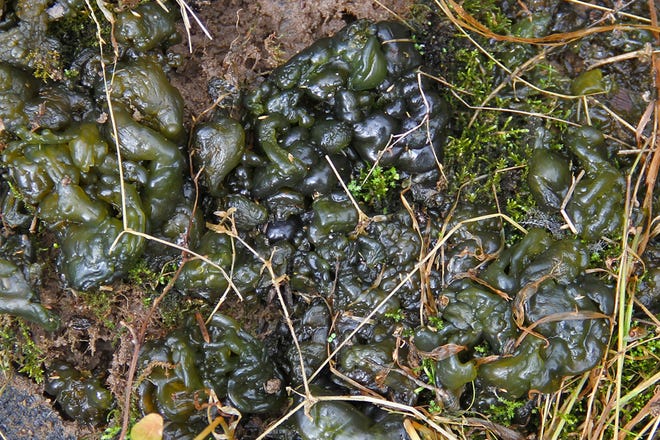Alien-looking green blobs invading your yard? Here's how to fight back
 Victoria Moorwood
Victoria Moorwood
Springtime weather brings beautiful flowers, trees and ... dark green, rubbery blobs?
If you've spotted any alien-looking, gelatinous globs in your yard, chances are you've stumbled across Nostoc commune.
Commonly mistaken for an algae, Nostoc commune is actually an ancient bacteria that can grow on soil, gravel and cement, Joe Boggs, an assistant professor with Ohio State University Extension, wrote in a recent university blog post. The photosynthesizing organism thrives in moisture, but can also survive extreme heat.
Don't worry, these otherworldly blobs won't take over your yard. Here's what to know and how to fight back.
Spring:Hummingbirds are traveling back to Ohio gardens. Here's what to know
Gardening:How to prevent those pesky spring weeds in your lawn (or not)

What is Nostoc commune, also known as star jelly?
Nostoc commune, also referred to as star jelly, witch's butter and mare's eggs, is a species of cyanobacterium that grows in countries all over the world. It can appear yellowish- or bluish-green and gelatinous when moist, and black and crusty when dry.
According to Boggs, the blobs were once thought to have formed from meteor dust, which is how it got the names star jelly, star shot and star slime.
Is Nostoc commune dangerous?
Nostoc commune is not toxic and will not harm plants, animals or lawns.
However, large masses of the bacteria can be slippery to walk on, posing an issue for nursery and greenhouse walkways, where it is commonly seen.
Spring gardening in Ohio:Planting dates, lawn care and other tips to know ✂️🌳
Bud watch!These plants bloom early in Cincinnati 🌼
How to get rid of Nostoc commune
The genus Nostoc is thought to have existed for billions of years, and the commune species can survive in extreme climates – so, getting rid of the blobs is tricky. Boggs recommends maintaining drainage in wet areas, since the bacteria thrives in moisture. Field trials conducted by Oregon State University also found Scythe, pelargonic acid that is used as a herbicide, was effective in killing the bacteria, Boggs said.